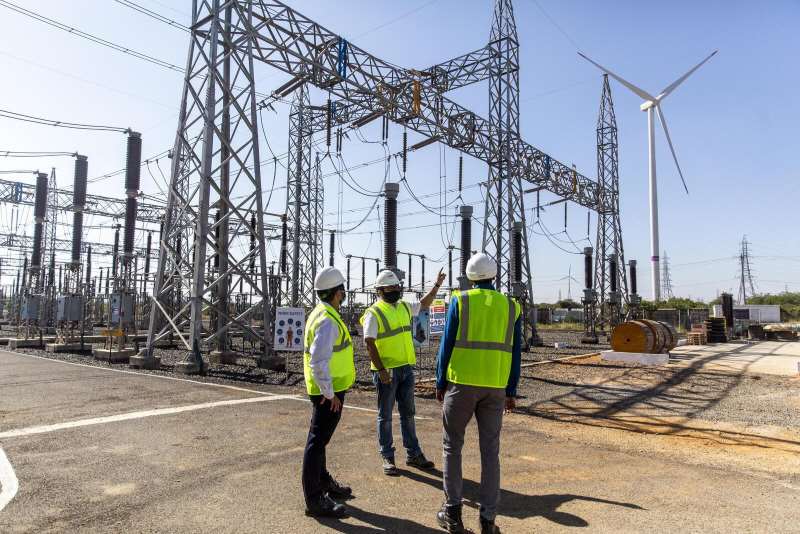Despite the decline in natural gas costs, electricity expenses continue to rise, putting sustained pressure on consumers. This surge in electricity costs contributes to increased inflation, likely to persist in the foreseeable future. The pattern of rising electricity expenses is expected to persist, exacerbating inflationary pressures.
Escalating Costs Despite Natural Gas Dip
Electricity expenses increased by 0.9% on a seasonally adjusted scale in March compared to February levels, and by 5% year-over-year on an unadjusted basis, as reported by the most recent consumer price index. This uptick compounds upon a 10.2% annual surge from the preceding year.
The escalation is somewhat unexpected given that the primary input cost for electricity—natural gas—has substantially decreased over the past two years.
Despite declining natural gas costs, rising electricity expenses highlight complex factors driving inflationary pressures. wsj print subscription said.
Lingering Effects of Market Shifts
Natural gas constitutes about 42% of U.S. electricity generation, the highest share among all energy sources. After Russia’s invasion of Ukraine in 2022, U.S. gas exports to Europe surged, driving natural gas prices upward. However, prices have since sharply declined, currently trading below $2 per million British thermal units. This marks a substantial decrease from the peaks exceeding $9 in 2022.
Utility companies transfer heightened fuel expenses to consumers, albeit the manner varies by state. While some states have reduced electricity tariffs in line with the decline in natural gas prices, others have continued to hike rates even after gas prices have descended.
Consumer Advocates Raise Alarms
The Energy Information Administration cautioned last year that the decrease in natural gas prices might not reflect in bills until sometime in 2024. Tyson Slocum, Director of Public Citizen’s Energy Program, elucidated, “Even with current low natural gas prices, there’s always a lag in how electricity costs adjust.”
Furthermore, approximately half of the typical consumer bill is unrelated to the fuel used for electricity generation, encompassing transmission and distribution expenses. Consumer advocates note that these costs are escalating rapidly.
Investments and Rate Hikes
Utility firms are investing substantially in enhancing their transmission infrastructure to accommodate the burgeoning demand for electricity, driven by the rise of electric vehicles and data centers for artificial intelligence applications. Companies are increasingly passing on these costs to consumers.
David Springe, Executive Director of the National Association of State Utility Consumer Advocates, anticipates an acceleration in this trend, stating, “I expect it to pick up speed.”
Rate Hike Requests
In Indiana, two utility companies, Duke Energy and CenterPoint Energy Indiana South, are seeking rate increases. Duke Energy aims to raise residential rates by around 19%, or $27.63 monthly for average consumers. Meanwhile, CenterPoint Energy Indiana South is requesting a 16% overall hike. These hikes aim to cover expenses, particularly transitioning from coal to cleaner energy sources.
Future Projections
Responding to criticisms, Duke Energy spokesperson Angeline Protogere defended the request, stating it aligns with similar requests from other major utilities, which have recently sought increases ranging between 10% and 10.8%. CenterPoint also justified its request, citing consistency with competitors and recommendations for even higher returns.
Anticipating future developments, some electricity experts predict that similar rate hikes may proliferate nationwide in the years to come. Springe cautioned, “The situation is likely to worsen,” citing no foreseeable indicators of a slowdown in price increases. Moreover, the looming increase in natural gas prices could further exacerbate electricity costs in the coming years.
Natural Gas Price Volatility
Futures traders speculate that prices may surpass $4 per million BTUs by December 2025 with new liquefied natural gas export facilities. Increased gas exports to Europe and Asia are expected to raise domestic prices. This expanded market access is likely to drive up prices domestically.
Subscribe to Barron’s Newspaper and The Wall Street Journal for comprehensive global market insights. Whether you’re a seasoned investor or starting your financial journey, Barron’s offers steadfast guidance and diverse perspectives every trading day. Enroll today to navigate the dynamic financial landscape with confidence and stay ahead with trusted insights.

